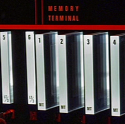|
Anphrax posted:I suppose I didn't really explain myself well enough. I installed Fedora to learn linux, I have no problem solving my issue the hard way; care to explain more in-depth? Go to System, Preferences, Startup Applications and add gkrellm there.
|
|
|
|

|
| # ? Apr 27, 2024 16:08 |
|
NOTinuyasha posted:Migrating to Gentoo to get away from morons is like running to Auschwitz to escape from the Nazis I haven't been to their forums yet, but I like the way the distro goes. What about Arch? Or maybe I'll just man up and go FreeBSD on my desktop. That'll be fun.
|
|
|
|
Is anyone familiar with non-mass storage device cameras on Linux? I have a Nikon Coolpix L20 that I need to recover some deleted photos from on the internal memory, but it is not a typical usb mass storage device. My original plan was to do the data recovery windows, but it does not show up as usual drive and thus none of the recovery software I've tried can even see it. The camera shows up in Ubuntu just fine, and I can browse (non-deleted) pictures on the internal memory and everything, but my original plan of using DD to copy the camera memory onto a regular old usb drive (and going to work on that in windows because barely I know what I am doing in Linux) is coming up short. It does not seem to act like a typical usb drive/device in Linux either. I found a thread here that talks about using gvfs-mount to identify the device, and I can see my camera there, but I don't know how to transform the information it displays into something DD could understand. This is what gvfs-mount -l tells me: code:
|
|
|
|
Most likely there will be no way to do data recovery since PTP is probably too high level to allow you to access anything lower level than images. Gvfs-mount won't help that problem because it just uses fuse to create a virtual filesystem over the protocol the camera is being accessed through. Edit: You probably would have already tried this if it was possible but is there a way to put the camera into an MSC mode (without reformatting the memory)? mystes fucked around with this message at 01:45 on Apr 6, 2010 |
|
|
|
IanMalcolm posted:I haven't been to their forums yet, but I like the way the distro goes. I love Gentoo for being a source based system and the package manager (Portage) is quite powerful. The problem with Gentoo is the developers and some of the community. There have been many internal issues with the developers which has caused some terrible package implementations and serious delays on certain things. The forums are generally helpful as long as you've read the documentation. Gentoo is great for learning about the inner workings of a Linux system, but outside of a learning/hobby system, its not very useful. The performance gains from compiling everything from source is only noticeable in specific cases (and even then will only be like 10%). If customization is your thing, then Gentoo has plenty to offer. And if you really want to man up, check out the bastard love child of Gentoo and FreeBSD: http://www.gentoo.org/proj/en/gentoo-alt/bsd/fbsd/
|
|
|
|
mystes posted:Most likely there will be no way to do data recovery since PTP is probably too high level to allow you to access anything lower level than images. Gvfs-mount won't help that problem because it just uses fuse to create a virtual filesystem over the protocol the camera is being accessed through. Ah I see. I didn't know what PTP was, but upon looking it up I think you are right. Oh well  But yeah, as far as I can tell, the camera doesn't even have the ability to do any sort of MSC mode at all. That would have made things a lot easier, or at least more obvious. I think I might see if there are homebrew firmwares available that have that ability. Thanks for the help!
|
|
|
|
Granted I haven't used Gentoo in 4+ years, but back when I did I found that successfully installing a package via portage was akin to flipping a coin. It was that bad. Worse still, this was the first major Linux distribution I had used, so I always thought that Linux package management systems were shoddy across the board. I switched over to Debian back then, and was shocked when every single package I installed was instant and successful. This is all understandable due to Gentoo's choice to compile everything from source, but I feel that it gives users a poor impression of what Linux can be like. Maybe you'll learn the basics hacking away at source packages to try to get them to compile, but it's not really an environment conducive to usability. Just because your primary package management system doesn't force you to compile everything from source doesn't mean it's not suitable for your advanced needs. SynVisions fucked around with this message at 02:57 on Apr 6, 2010 |
|
|
|
SynVisions posted:This is all understandable due to Gentoo's choice to compile everything from source, but I feel that it gives users a poor impression of what Linux can be like. Maybe you'll learn the basics hacking away at source packages to try to get them to compile, but it's not really an environment conducive to usability. Just because your primary package management system doesn't force you to compile everything from source doesn't mean it's not suitable for your advanced needs. Compiling everything from source can be pretty powerful when you realize that the binary package might not be compiled with all the options you want (ssl support comes to mind). Then you realize that this is 2010, not 1990, and my system is powerful enough to load the OpenSSl libraries even if I'm not using them, and then compiling everything makes no loving sense again.
|
|
|
|
SynVisions posted:Granted I haven't used Gentoo in 3-4 years, but back when I did I found that successfully installing a package via portage was akin to flipping a coin. It was that bad. Worse still, this was the first major Linux distribution I had used, so I always thought that Linux package management systems were shoddy across the board. SynVisions posted:Just because your primary package management system doesn't force you to compile everything from source doesn't mean it's not suitable for your advanced needs.
|
|
|
|
FISHMANPET posted:Compiling everything from source can be pretty powerful when you realize that the binary package might not be compiled with all the options you want (ssl support comes to mind). Then you realize that this is 2010, not 1990, and my system is powerful enough to load the OpenSSl libraries even if I'm not using them, and then compiling everything makes no loving sense again. Then again, todays systems can compile most poo poo in like 2 minutes.
|
|
|
|
Kind of a dumb question I was thinking about for some reason. I remember a long time ago telnetting into servers, there'd be a ton of people all in one server at the same time. Are there generally limits on how many people you can have logged in at one time, or does it just get slower and slower as memory/disk/cpu/bandwith are used up? What about back then? I'm thinking like the library type systems where you could search for books instead of a card catalog, or the old ISP servers you dialed into (I guess the # of modems would be your limit)
|
|
|
|
On a modern system there's probably an effective hard limit around the 32000 simultaneous user region because of PID exhaustion, but that could be raised if it presented a problem and there weren't any legacy processes on the system that depended on 16-bit PIDs. Memory, bandwidth, and CPU usage are far more likely to be the limiting factors. Old systems actually wouldn't be much different, as long as they were UNIX-like. For dedicated systems like a card catalog, there may not even be process-per-user stuff going on, so the limit could be much higher.
|
|
|
|
Bob Morales posted:Then again, todays systems can compile most poo poo in like 2 minutes. I meant in the runtimes. The only reason I would want to compile binary without SSL support or whatever, since I can turn that feature off in the configuration, is because I don't want my binary to load those libraries and slow down the program. But hardware is fast enough that it doesn't matter.
|
|
|
|
IanMalcolm posted:Or maybe I'll just man up and go FreeBSD on my desktop. That'll be fun. I think there's two kinds of potential fun here, there's ironing out issues related to configuration or something that might actually lead to learning, and then there's why isn't this compiling, what does this error mean, are all my dependencies new enough (or too new?!!?) apply 20 different patches you don't understand just to get to the point of configuration.
|
|
|
|
I've read that there's some work being done to enable hardware-assisted HD playback on Linux. Does this work at all? What type of system is required? Will it work with just any HD movie, or are particular file formats or encodings required? I have an old AMD64 system and it'd be nice to be able to use it to stream media from my fileserver, but it's so old that I know it won't be fast enough to play HD. (I don't need 1080p, because my display can't do it. It can do 1080i, but even just 720p would be nice.)
|
|
|
|
So, considering the amount of free time I have (goes to zero), I'll install Debian on my production machine and keep playing with Gentoo and FreeBSD on VMs. How stable is Debian Unstable these days? Way back in the day I used to run testing and it gave me a few headaches, unstable was, well, unstable. edit: vlack posted:I've read that there's some work being done to enable hardware-assisted HD playback on Linux. Does this work at all? What type of system is required? Will it work with just any HD movie, or are particular file formats or encodings required? NVidia cards have a tecnology called PureVideo on windows. Basically it uses CUDA over DirectX to decode some formats (h.264 being the most notable, also the most usable). Since PureVideo depends on DirectX, it will never come to Linux. Now, CUDA works on linux and there's an SDK for that, so there are projects working on hardware acceleration for video. The project that comes to mind now is XmVC (I think that's the name, X motion Video Compensation, I'm too lazy to look it up). It's an extension to X11, but I haven't been able to get it to work. XBMC has a liveCD that seems to implement that or something similar to play 1080p x264 video entirely in the GPU. So, basically, your best bet it an NVidia card and x264 video, which is what you should be using anyway. IanMalcolm fucked around with this message at 05:14 on Apr 7, 2010 |
|
|
|
IanMalcolm posted:So, considering the amount of free time I have (goes to zero), I'll install Debian on my production machine and keep playing with Gentoo and FreeBSD on VMs. I'm not sure what you are looking for here. Labeling it unstable means it is well, unstable. Why would you consider that for a production machine?
|
|
|
|
Virigoth posted:I'm not sure what you are looking for here. Labeling it unstable means it is well, unstable. Why would you consider that for a production machine? Because I like to live on the edge? See, I've used Unstable back in the days of Potato (do they still name Debian after Toy Story characters?). Then I switched to Ubuntu, which used Debian Unstable for their base, mostly. I've been away from Debian eversince. My main computer currently runs Ubuntu, and I usually run the late alphas, early betas. What I'm asking is if running Debian Unstable will be a similar experience.
|
|
|
|
No. Ubuntu imports from Debian and then stabilizes it, while Debian Unstable is a moving target.
|
|
|
|
IanMalcolm posted:NVidia cards have a tecnology called PureVideo on windows. Basically it uses CUDA over DirectX to decode some formats (h.264 being the most notable, also the most usable). Since PureVideo depends on DirectX, it will never come to Linux.
|
|
|
|
How would one recover from "chmod 000 /bin/chmod"? I was asked that question the other day and I don't have an answer other then fix with a boot disc or get a new copy of chmod.
|
|
|
|
Sojourner posted:How would one recover from "chmod 000 /bin/chmod"? I was asked that question the other day and I don't have an answer other then fix with a boot disc or get a new copy of chmod. Or you could just make sure the root fs is FAT32.
|
|
|
|
It's easier to just do something like this:code:It doesn't actually try to track down the chmod binary or anything silly like that. SynVisions fucked around with this message at 16:50 on Apr 9, 2010 |
|
|
|
You can also invoke the linux dynamic loader directly and skip filesystem executable permissions. /lib/ld-linux.so.2 /bin/chmod 755 /bin/chmod Sneaking Mission fucked around with this message at 18:17 on Apr 9, 2010 |
|
|
|
mystes posted:There has been linux support for purevideo for a long time. If you have a video card with purevideo support there are drivers for various video players. There is work on various other types of video acceleration for other cards but none if it is complete so purevideo is your best bet. Turns out you were right. I don't know how I missed that.
|
|
|
|
Here's a crapload of questions. If I've got a iDRAC, you know I can access the console either via the web client (console=tty0), or by SSH (console=ttyS0), and I can get kernel messages to go to both by specifying both. But, /dev/console only gets attached to whichever is specified last, which means the output from startup and shutdown scripts only goes to one and not the other. Is there any way to work around that so that my admins can use either the web client or SSH, and get the full output regardless of which they're using, and regardless of which way the machine was previously booted? Basically, I guess, I either need init to do something fancy and write to two terminals, or I need to duplicate /dev/console somehow. This is CentOS 5.4 and iDRAC 6 Enterprise, if it matters. Alternatively, if there were some way to get the iDRAC web client (java client) to use the serial console instead of tty0, I guess that would do the trick, too. Also, I understand that doing a 'console -h com2' in the iDRAC CLI is supposed to show me the console history buffer, but it does not. Unrelated question, I'm having various nagging issues with Anaconda in its network setup routines. I'd like to do some debugging by adding some additional logging and whatnot, what's the best way to do this? I'm assuming I have to crack open the initrd and build a new one every time I wish to try something, or is there an easier way? I'm setting up networking on the box being installed by using the 'network' command in a kickstart file with --bootproto=static, and then specifying all the information with --ip=, --netmask=, etc. I was originally thinking that I wanted the box to be installed with --hostname= set to the machine's short name, not the fully-qualified name, since a bunch of existing scripts (previous Solaris environment) depend on the 'hostname' command returning the short name and not the fully-qualified name. However, if I do --hostname= with the short name, then Anaconda has trouble because there's a point where it tries to do a lookup on the hostname, which fails since there's (apparently) no point where I can also specify a DNS search path. If I specify the long name or no name at all, it works, but the host gets installed with its hostname set to the long name. Is there any answer aside from editing the relevant config files in a postinstall script? Some way to specify a DNS search path or to tell it to not try to do a lookup on the hostname and just use the already-specified IP and hostname information?
|
|
|
|
vlack posted:I've read that there's some work being done to enable hardware-assisted HD playback on Linux. Does this work at all? What type of system is required? Will it work with just any HD movie, or are particular file formats or encodings required? Both XBMC and MPlayer supports VDPAU if you've got a decent NVIDIA card (I don't, but my computer's more than powerful enough to do 1080p). There's also the Broadcom Crystal HD card which XBMC is working on together with the company, which will make full HD playback possible on low-end devices through hardware decoding.
|
|
|
|
On using sed: I'm trying to reformat some lines in a text file. First thing I need to do is change a date format. A line looks like: code:code:code:code:
|
|
|
|
When you execute that sed command with backticks, your shell is going to run the stuff in backticks first, then take the result of that and feed it back into the original command, and then run it. That's why you're getting literal interpretations of the ampersand, because your shell is literally executing the contents of the backticks, and sed has no involvement at this point. Honestly for something like this I'd just write a simple bash or perl script. It will only take you a few lines.
|
|
|
|
Oh. Good point. Is there a way to execute shell commands within the scope of sed? I saw some reference to using $([command]) but haven't had any luck with that either. I don't know perl well enough to whip up something like this, and with a bash script I'd probably embed sed and fall into the same trap. 
|
|
|
|
ExileStrife posted:Oh. Good point. Is there a way to execute shell commands within the scope of sed? I saw some reference to using $([command]) but haven't had any luck with that either. I don't know perl well enough to whip up something like this, and with a bash script I'd probably embed sed and fall into the same trap. $() is synonymous with ``. Now is as good of a time as any to learn Perl or Python. You're really limiting your ability to solve problems like this without knowledge of any major scripting language. So I guess it depends on if this is a full-time job or serious hobby for you.  Regardless, you can do it in a bash script, and using sed is fine. Just iterate through all of your lines in a loop, the first step is to grab the date in a variable and transform the contents of that variable with date or whatever tool you want. Use sed again to replace the date with your new date. Not the most elegant solution, but workable and easy.
|
|
|
|
If nothing else crops up, I'll do that. I probably led you on to believe I know a lot less about bash scripting than I actually do by highlighting my stubbornness to try to do this with one line here. If I can't do it in a sed one-liner (which I was shooting for), yes, some simple loops will work out in the end. Anyway, thanks!
|
|
|
|
Edit: Double Post
maskenfreiheit fucked around with this message at 21:00 on Mar 13, 2017 |
|
|
|
It sounds like something is wrong with the bootable image on your USB drive. I'd format it and try again with a different tool? If you want to verify this, just slide out your HDD and try booting from the USB drive again. Either that, or just burn a CD and try booting from that instead. If all else fails, download a bootable image of something other than FreeBSD and try that. Either way you need to do some troubleshooting to narrow down the problem first. If it's just jumping straight into Windows it has little to do with FreeBSD and more that it's either not using the boot order you expected, or the boot files are bad.
|
|
|
|
GregNorc posted:Cross posting this from the BSD thread since I'm not sure which thread is more relevant... Ive had major issues with unetbootin recently. . . Best thing is to check FreeBSDs site and find their "USB Boot" instructions, or google around. Unetbootin has gone downhill like crazy in recent months in my honest.
|
|
|
|
Is there something I can install to make mouse acceleration in Ubuntu not chomp down on horse dicks? Regardless of how I set it, my mouse just flies all over the place. The ability to map my mouse buttons would be nice too.
|
|
|
|
Edit: Double Post
maskenfreiheit fucked around with this message at 21:01 on Mar 13, 2017 |
|
|
|
GregNorc posted:I'm guessing the issue is I used the CD .img and not the memory stick image. Try to keep it to one thread. There are a couple ways to get a progress bar for dd, Google returns about 5 different ways.
|
|
|
|
Edit: Double Post
maskenfreiheit fucked around with this message at 21:01 on Mar 13, 2017 |
|
|
|

|
| # ? Apr 27, 2024 16:08 |
|
GregNorc posted:Yeah, all of them seem to rely on random linux programs though If you send a USR1 signal (kill -USR1 <pid>) it will display how much bits dd has copied, though in base 10 instead of base 2. As long as you know about how big the source file is you can get an idea of how far it's gone.
|
|
|


























